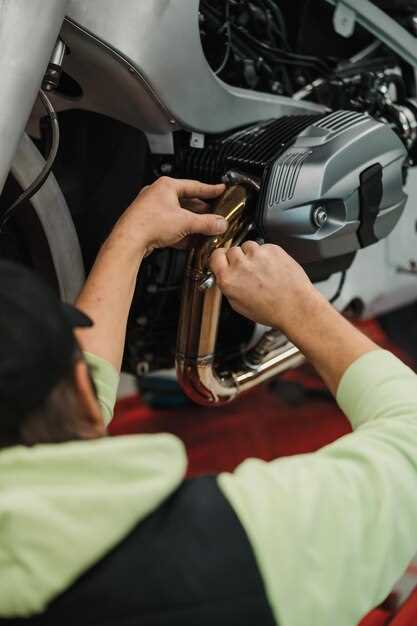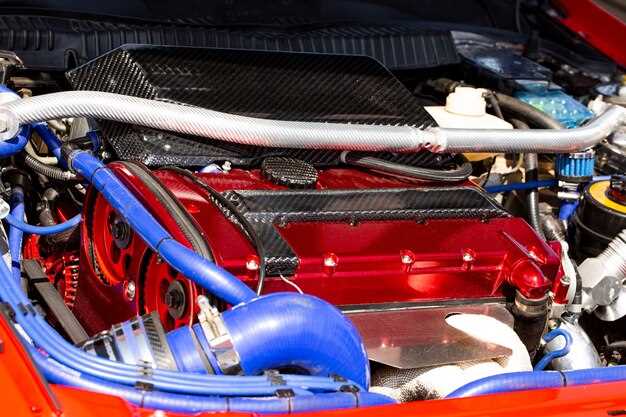
If you’re a car enthusiast looking to enhance your vehicle’s performance, one of the most effective ways to achieve a noticeable increase in horsepower is by upgrading your exhaust system. A well-designed exhaust system not only improves engine efficiency but also allows for better airflow, ultimately translating into more power. In this article, we’ll explore some of the top exhaust upgrades that can help you unlock your car’s full potential.
Understanding Exhaust Dynamics is crucial for optimizing your vehicle’s performance. The way exhaust gases exit the engine affects both power and torque. A restrictive factory exhaust can hinder performance by increasing back pressure. Therefore, investing in aftermarket exhaust components can significantly improve engine breathing.
Performance Exhaust Headers, high-flow catalytic converters, and cat-back exhaust systems are among the most popular modifications. Each component not only enhances horsepower but also contributes to a more aggressive sound profile, making your ride more enjoyable.
In the following sections, we will break down each type of exhaust upgrade, discussing its benefits, installation process, and how it contributes to boosting your car’s horsepower. Whether you’re a weekend warrior or a serious racer, these upgrades can help you achieve the performance you’ve always desired.
Choosing the Right Performance Exhaust System for Your Vehicle

Selecting the appropriate performance exhaust system is crucial for enhancing your vehicle’s horsepower and overall efficiency. The first step is to consider your vehicle’s make and model, as different systems may be more compatible with certain engines. Research specific systems that cater to your car to ensure optimal performance gains.
Decide on the type of exhaust system you want. Options include cat-back systems, axle-back kits, and header-back configurations. A cat-back system typically provides the most significant performance increase, as it replaces the exhaust from the catalytic converter to the rear of the vehicle. In contrast, an axle-back kit only replaces the rear portion, which may offer a more budget-friendly option with moderate performance improvements.
Material choice plays a vital role in performance and longevity. Stainless steel systems are the most durable and resistant to corrosion, but they also come at a higher cost. Aluminized steel is a more affordable option, although it may not last as long under harsh conditions. Consider your budget, climate, and driving habits when making this decision.
Evaluate the sound level you desire from your exhaust. Different systems produce varying exhaust notes, ranging from subtle to aggressive. Look for systems that provide sound clips or reviews to gauge how they will sound on your vehicle. It is essential to choose an exhaust that matches your personal preferences without being overly loud or disruptive.
Installation complexity is another important factor. Some systems are designed for simple bolt-on installation, while others may require professional help. If you’re comfortable with DIY projects, look for systems that come with comprehensive installation instructions. If not, budget for potential labor costs.
Finally, consider any legal restrictions regarding noise levels and emissions in your area. Ensure that the exhaust system you choose complies with local regulations to avoid fines and ensure road legality. By carefully weighing these factors, you can select a performance exhaust system that maximizes horsepower while fitting your specific needs and preferences.
Installing High-Performance Headers: Key Considerations
Upgrading to high-performance headers can significantly enhance your vehicle’s horsepower and torque by improving exhaust flow. However, several factors should be considered before installation to ensure optimal performance and compatibility.
- Material: Choose headers made from high-quality materials such as stainless steel or mandrel-bent tubing. These materials resist corrosion and withstand high temperatures, ensuring longevity.
- Type of Headers: Options include shorty headers and long tube headers. Shorty headers are easier to install and fit better in tight engine bays but may offer less performance boost compared to long tube headers, which provide maximum flow but require more installation effort.
- Compatibility: Verify that the headers are compatible with your specific make and model. Some headers may not fit well with factory components like exhaust systems or emissions equipment.
- Primary Tube Size: The diameter of the primary tubes should be appropriate for your engine’s output. Too large or too small a diameter can negatively affect performance. Research your engine’s specifications to find the optimal size.
- Installation Difficulty: Consider your mechanical skills and equipment. Some header installations require extensive preparation and may necessitate professional installation due to the complexity of the job.
- Tuning: After installing high-performance headers, it is often necessary to retune your engine. Proper tuning ensures that the engine runs efficiently and takes full advantage of the increased exhaust flow.
- Legal Considerations: Be aware of local emissions laws. Some headers may not meet regulations if they eliminate catalytic converters or have other modifications that impact emissions in your area.
Taking these factors into account can help you make an informed decision and maximize the performance advantages of high-performance headers in your car.
Tuning Your Engine After Exhaust Modifications: Best Practices

After upgrading your car’s exhaust system, tuning the engine is essential to fully realize the potential horsepower gains. The stock engine management settings may not accommodate increased airflow, leading to suboptimal performance. Here are the best practices for tuning your engine post-exhaust modification.
First, perform a comprehensive diagnostic check of the engine’s performance parameters. Utilize a dyno to measure horsepower and torque before and after modifications. This baseline will help you assess gains and make informed tuning decisions.
Next, consider reprogramming the engine control unit (ECU). An aftermarket engine tune can optimize fuel maps, ignition timing, and air-fuel ratios, ensuring that the engine runs efficiently with the new exhaust system. Many tuners offer specific maps designed for popular exhaust upgrades, allowing you to choose the one that best matches your setup.
In addition to reprogramming the ECU, you may need to adjust the air intake system. A free-flowing intake can significantly complement exhaust modifications by allowing the engine to breathe better. Pairing an upgraded intake with an ECU tune will maximize both efficiency and power output.
Monitoring engine parameters is crucial after any tuning adjustments. Install a wideband oxygen sensor to measure air-fuel ratios in real-time. This device helps you ensure proper combustion levels, preventing any potential engine damage from running too lean or rich.
Finally, consider regular tuning updates, especially if you make further modifications in the future. Each change can affect overall performance, requiring adjustments to the ECU to maintain optimal efficiency and power. Consistent monitoring and updating will keep your vehicle performing at its best.

